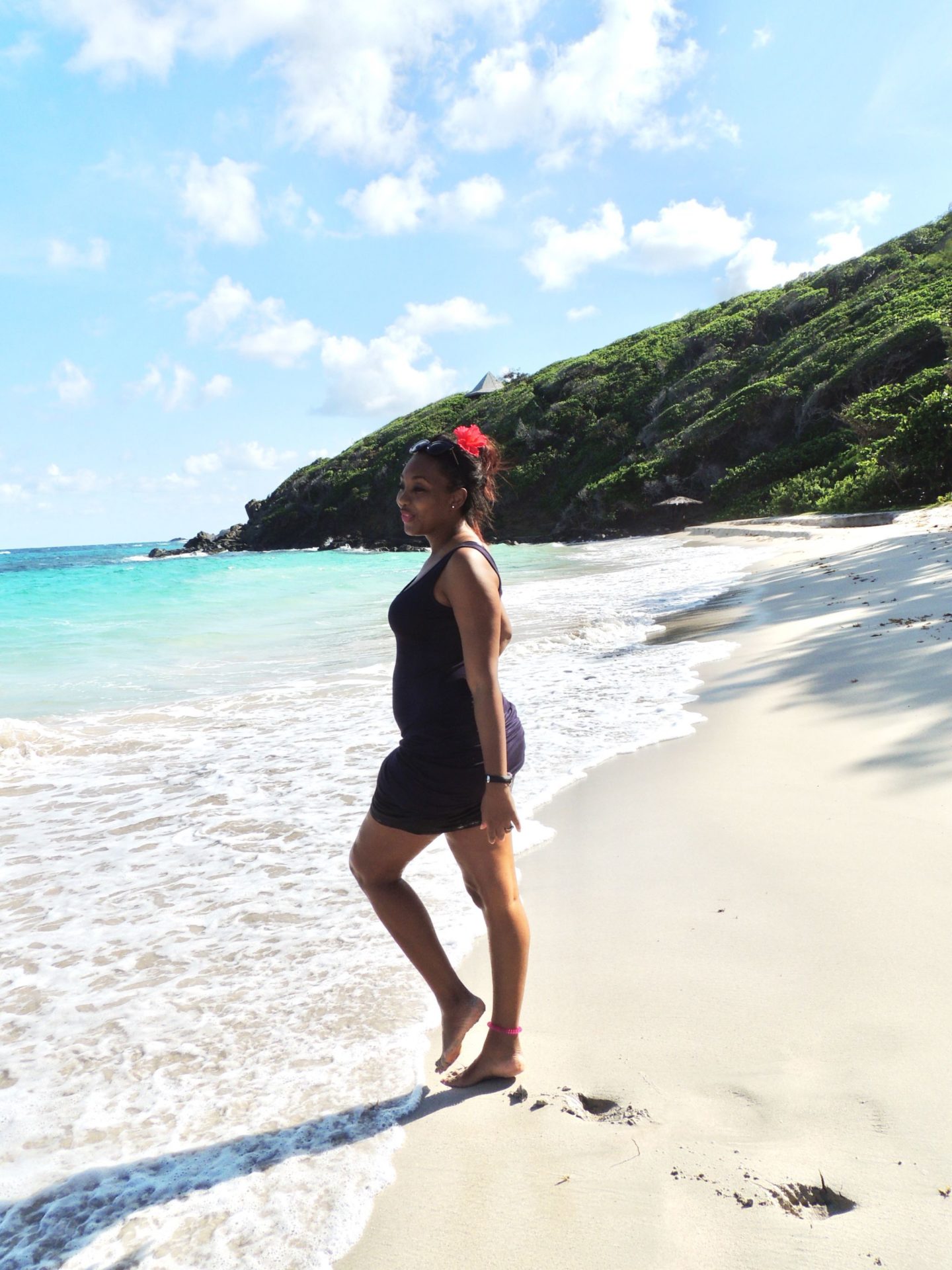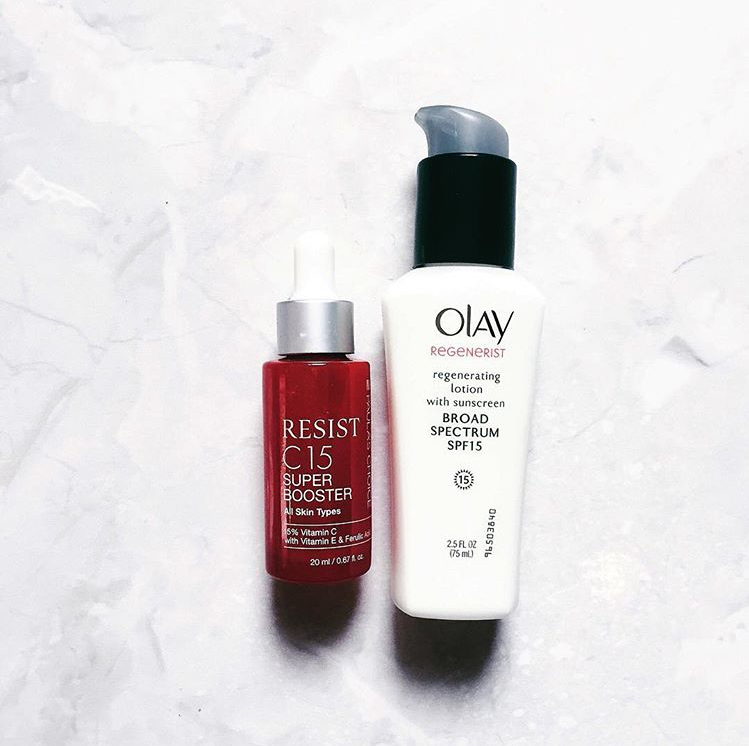Sunscreen has now become a mainstay in my beauty routine and there is no negotiation about that. Rewind to a decade ago and you would see me ditching to slather on my sun protection because I hated the yucky, greasy feeling of the thick white cream that smells like days at the beach. I must admit that in my early 20s I did not fully understand the benefits of sunscreen for my skin.
Even when I knew better, I would forego dedicated sun protection in favour of a foundation with sunscreen. All this just to avoid having to add soooo many layers of product to my skin and more minutes to my already rushed morning. Now that I’m older (ahem) and wiser I make sure that a good sunscreen is the last skincare product I use before I start my make up routine.
Why is sunscreen important?
Sunscreen not only forms a barrier between our skin and harmful UVA and UVB rays but it also guards against premature skin aging.
Sunscreen also protects whatever progress your skin has made from using other skincare products such as retinols, exfoliants etc. More importantly for women of colour we need to take note of this because our skin ages in different ways to other races. Blotchiness, uneven skin tone, age spots, thickening and darkening of the skin (like around the temple area) is how our skin show signs of aging.
I have experienced some of these issues and I’m now hell-bent on protecting my skin from unnecessary exposure. Do you know research shows that our skin can get sun damage the minute we step out of the house. eeekk!!! Not to mention that UV light in particular UVA can affect our skin even when we are indoors because UVA light can penetrate windows.
As a result of this some advocate for wearing sunscreen even if you’re not going outside! There is also the alternative of investing in some UV covering for your windows and wearing clothes with UV protection.

How to choose a sunscreen?
Firstly there are two main types of sunscreens: chemical sunscreen and physical/natural sunscreen. Chemical sunscreens have the active ingredients such as Avobenzone, Octisalate, Homosalate, Oxybenzone and Octocrylene.
This sunscreen protects against the sun by absorbing UV rays and preventing rays form reaching the skin. The harmful rays are then turned into heat and released back into the atmosphere. Some people may be sensitive to chemical sunscreens and may feel a stinging sensation when applied.
I do experience a slight tingle when I apply my sunscreen (especially if I’m trying a new brand) but it subsides after a few seconds. My favourite sunscreen is the Olay Regenerist SPF 15 and SPF 50 and the Paula’s Choice Hydralight Shine-Free Mineral Complex SPF 30 and Nutrogena Ultra Sheer Body Mist Sunscreen Broad Spectrum SPF 70.


Physical/natural sunscreen (sometimes referred to as mineral based sunscreens) on the other hand is made up of the active ingredients titanium dioxide and zinc oxide.
Unlike the process that takes place with chemical sunscreens mineral based sunscreens absorb, reflect and scatter UV radiation (1) which is considered by some to be more effective against UV rays.
Though I find mineral sunscreen effective I do not like the white cast some brands leave on my face and how it oxidizes under my makeup. Some sunscreen products either block UVA or UVB while others have formulations to protect against both types of UV radiation.
This is where the broad-spectrum options come in, as they are formulated with both physical and chemical ingredients to provide board spectrum protection.
Secondly I consider the SPF (Sun Protection Factor). Sunscreens rated SPF 30 or higher is often viewed as the most effective against harmful UV rays. There is some consensus here however, some researchers argue that higher SPFs also give the user the false sense of security that encourages excessive sun exposure which results in doing more harm.
How much sunscreen should you use?
We have all seen the countless Pinterest posts on the nickel size amount of product we should apply. However, I ditch the measurements and make sure to cover my entire face and neck in a layer of product, making sure to get every inch of my face. I let sit for a few seconds then I rub in any excess product.
This way I don’t get caught trying to stretch the nickel size amount on my face and neck and skimpy on the product. After all we all have different face shapes and sizes and what may work for me may not work for you.
Experts say a good rule to follow is to apply sunscreen before sun exposure and reapply after an hour. The latter may seem impractical but I see the benefit in this approach if you will be sweating or exposed to excessive sunlight (more on that below).
Research also suggest that some of the most common mistakes in sunscreen application are exposure to UV rays before sun protection, missing areas and not applying enough.(2)
Optimize the Benefits of Sunscreen By Paring With Antioxidants

“In the skincare world Vitamin C and Sunscreen are considered a power couple!”
A couple of years ago I was elated to stumble on an article that lamented the effectiveness of using antioxidants (most notably Vitamin C) to optimize the effectiveness of your sunscreen.
As an antioxidant, Vitamin C protects against oxidative stress by neutralizing free radicals on the skin(3). Thus preventing environmental stressors from reaching the skin beneath and causing premature signs of aging. Vitamin C also evens pigmentation and stimulates the production of collagen. This is great news for anyone interested in an anti- aging skin care regimen.
Research also shows that combining Vitamin E with Vitamin C boosts results by 4 times more than if Vitamin C was used alone. Additionally adding ferulic acid to the mix can increase vitamin C efficacy by 8 times!(3)
Since then I swear by slathering on a few drops of a Vitamin C serum and then applying my sunscreen as I outlined above. There are some very good Vitamin C options on the market and I love Paula’s Choice C15 Booster (available here).
I have seen dramatic results in hyper-pigmentation from using the C15 booster. I’m also happy that it was re-formulated (I’m guessing) because it now lasts for 12 months after opening instead of the previous 3 months.
My sun care routine for days at the beach.
If I’m going on vacation or spending more time in the sun than usual, I make sure to amp up my daily routine.
I will definitely forego any exfoliating products that day (because from experience my skin ends up really dry from the excessive sun exposure and the double dose of chemicals) and use the highest SPF I can find and or comfortably tolerate.
As I mention I can’t stand the greasy feeling so I’ve invested in dedicated sunscreens that provide the highest coverage and still provide a matte or ‘decent’ looking finish.
When it comes to body sun care, I go all out as well. More on body sun care in another post. At the end of the day I make sure to wash my face with a calming moisturizing cleanser and a warm wash cloth for a little exfoliating action. I finish with a good moisturizer before bed.
I’ve noticed that if I don’t make an effort to remove the sunscreen with trapped sweat and dirt, it can lead to me getting clogged pores, yikes!
I definitely think choosing a sunscreen comes down to personal preference because both options have pros and cons. Checking with a dermatologist should give you a clear view on what options are best for your lifestyle and health.
So this is just my sun care routine for making sure that my skin stays healthy and radiant all year round. Do you have a similar routine? Share your thoughts in the comments below.
****************************************************************************************************
Sources
(1)Morabito, K., Shapley, N. C., Steeley, K. G. and Tripathi, A. (2011), Review of sunscreen and the emergence of non-conventional absorbers and their applications in ultraviolet protection. International Journal of Cosmetic Science, 33: 385–390. doi:10.1111/j.1468-2494.2011.00654.x (2) Petersen, B. and Wulf, H. C. (2014), Application of sunscreen – theory and reality. Photodermatol. Photoimmunol.Photomed., 30: 96–101. doi:10.1111/phpp.12099 (3) Telang PS. Vitamin C in dermatology. Indian Dermatology Online Journal. 2013;4(2):143-146. doi:10.4103/2229-5178.110593


